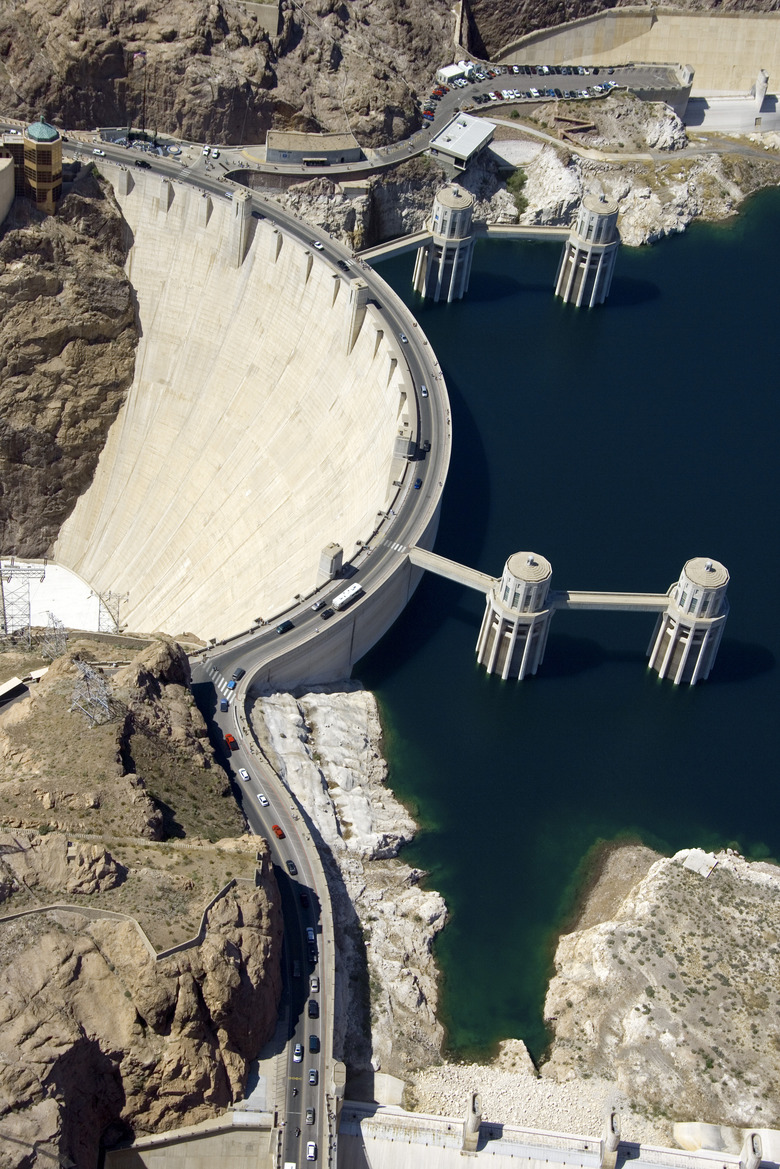Two New Forms Of Energy In The Late 1800s
In the late 1800s, scientists developed the groundwork to fully harness hydroelectric power and natural gas, two forms of energy that power much of the world's infrastructure today. In addition to their benefits, both forms pose logistical, economic and ethical challenges, fostering some debate over their long-term viability as sustainable energy sources.
Harnessing Currents
Harnessing Currents
Egyptian and Greek civilizations used the power of flowing water thousands of years ago, first using waterwheels to turn millstones and grind wheat. Later factories in the 1700s developed similar systems to mass-produce textiles and furniture. Marrying the electric generator of the late 1800s to hydropower is what enabled a steady electricity source. In 1881, Niagara Falls became the site of the first hydroelectric plant, used to power the city's streetlights. Over 200 more plants were built in the United States over the next 10 years. After the Bureau of Reclamation was founded in 1902, over 220 dams were built for irrigation and power across the western U.S., and 56 were equipped with hydroelectric plants.
Hydroelectric Challenges
Hydroelectric Challenges
The dams used to generate hydroelectric power impact the environment on multiple levels. Species that thrive in river ecosystems may suffer in the reservoir created by a dam, and the nutrient-rich sediments trapped by dam construction can result in less fertility for floodplains and deltas downstream. Surprisingly dams also contribute to greenhouse gas build-up when living plants submerged by a newly formed reservoir die and break down into carbon dioxide or methane. Dams also come with considerable cost for land rights where applicable, construction and maintenance.
In Need of a Pipeline
In Need of a Pipeline
Ancient records from 200 B.C. indicate how the Chinese created bamboo pipe systems to burn natural gas, which they used to evaporate salt water and produce salt. Likewise the construction of infrastructure in the 1800's allowed natural gas to be transported by pipe and used for lights in domestic and business structures. The demand for electricity combined with the inherent difficulties of transporting natural gas curtailed widespread adoption, although production still rose to meet regional demand for heating water, homes and cooking. Natural gas production peaked in the U.S. in 1973; some 17 percent of the natural gas used in the U.S. is now imported, mostly from Canada.
Natural Considerations
Natural Considerations
Natural gas produces far less carbon dioxide when burned, making it a cleaner energy source than other fossil fuels such as oil or coal. However, it must be stored and transported within high pressure, sealable containment systems or it will leak. Natural gas deposits frequently occur near coal mines and oil wells, and typically consist of methane with other compounds such as butane, propane, water vapor or carbon dioxide. Natural gas can also be extracted from unconventional sources, such as methane extracted from landfills or wastewater treatment plants, making it a renewable resource. Natural gas such as the deposits found within shallow coal beds may contain large amounts of water, creating runoff or disposal complications for the local environment.
References
- Kennesaw State University: Hydropower
- Kennesaw State University: Natural Gas
- The Institute for Public Policy & Economic Development: Natural Gas: A Summary of History, Uses and Consumption
Cite This Article
MLA
Sanders, DaVaun. "Two New Forms Of Energy In The Late 1800s" sciencing.com, https://www.sciencing.com/two-new-forms-energy-late-1800s-18687/. 24 April 2017.
APA
Sanders, DaVaun. (2017, April 24). Two New Forms Of Energy In The Late 1800s. sciencing.com. Retrieved from https://www.sciencing.com/two-new-forms-energy-late-1800s-18687/
Chicago
Sanders, DaVaun. Two New Forms Of Energy In The Late 1800s last modified March 24, 2022. https://www.sciencing.com/two-new-forms-energy-late-1800s-18687/
